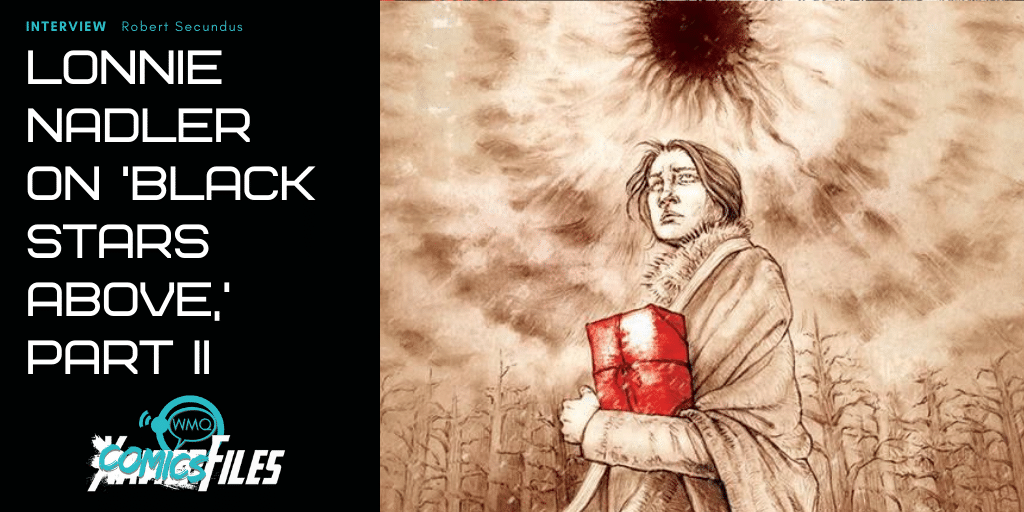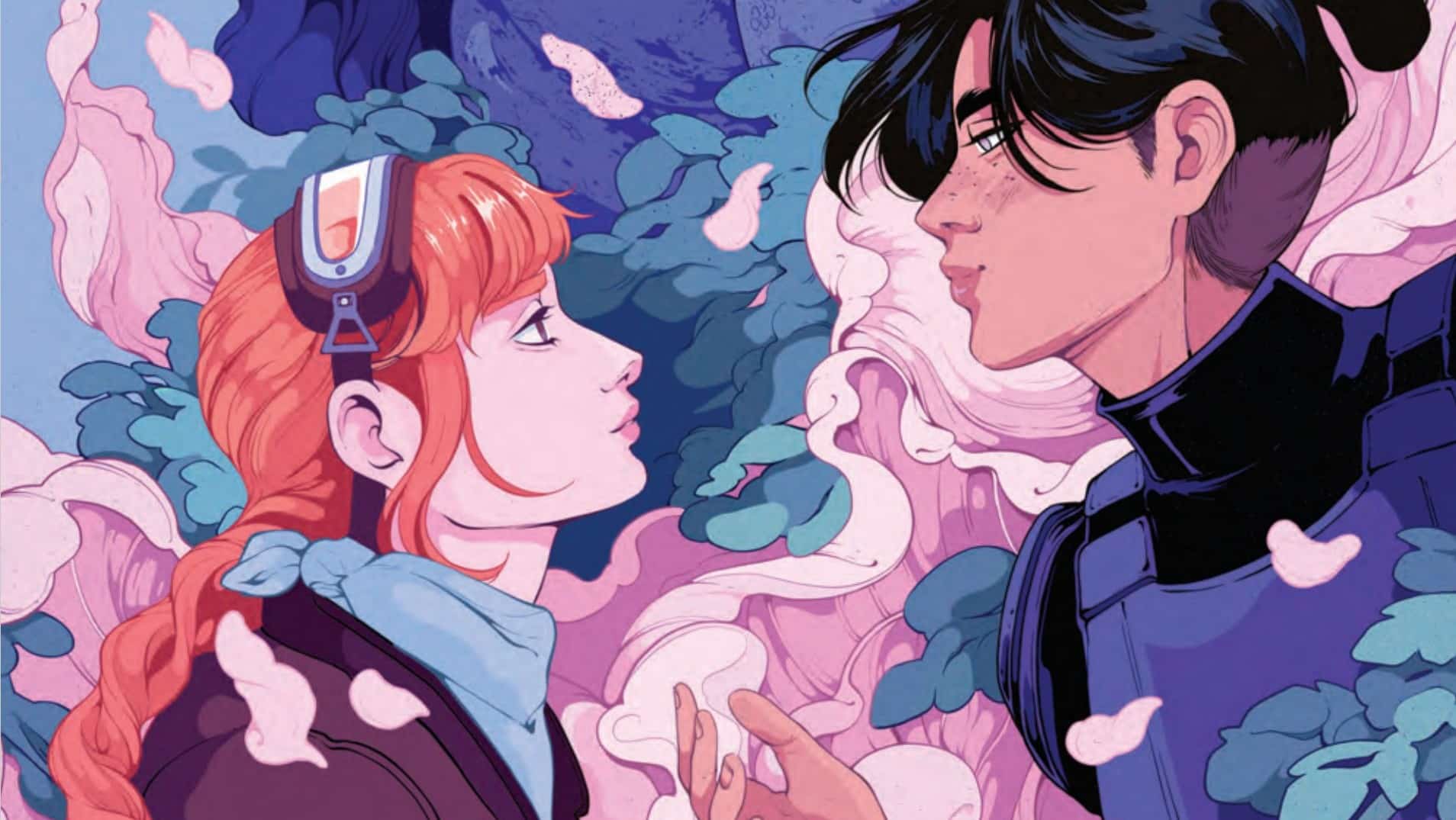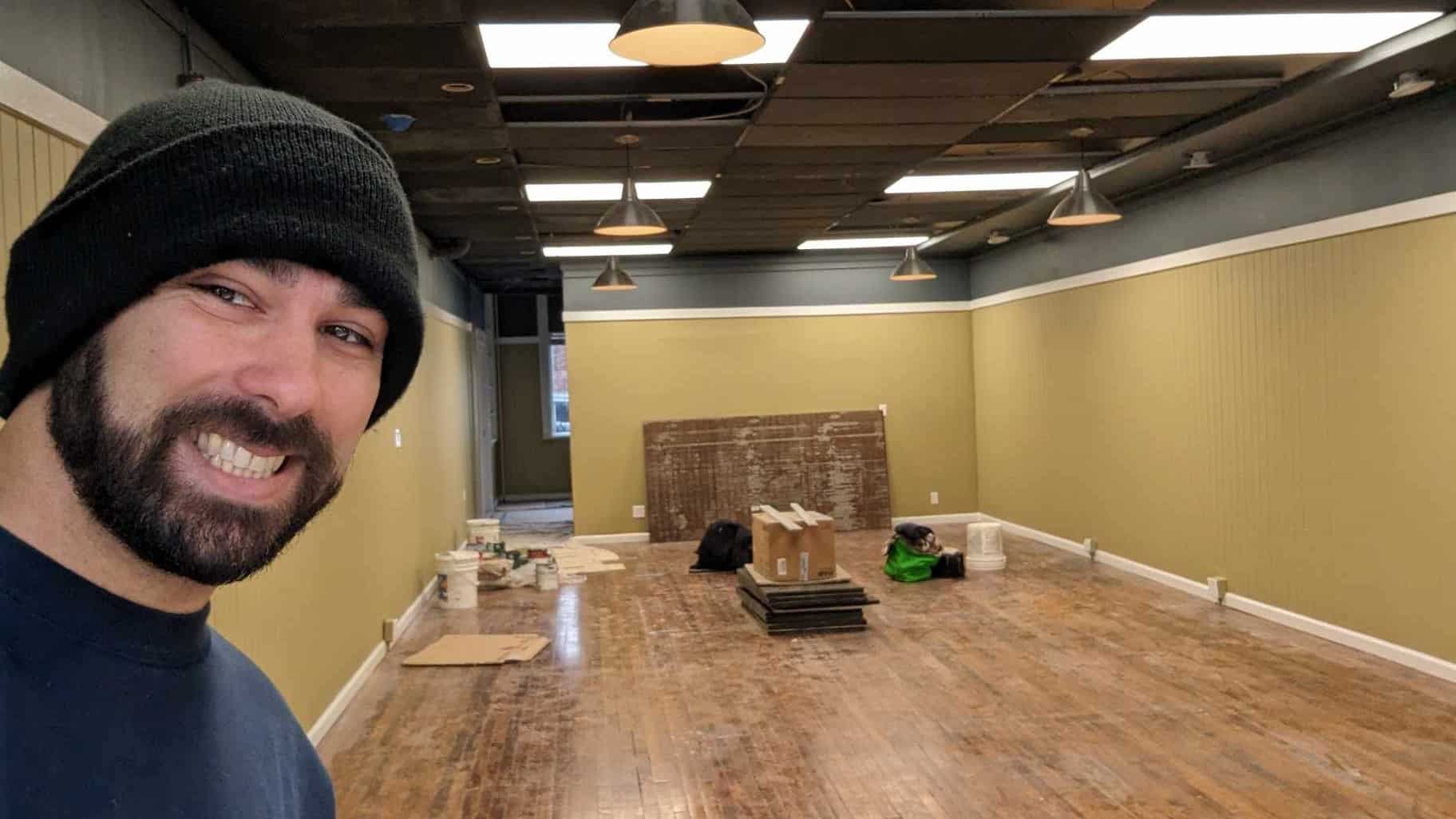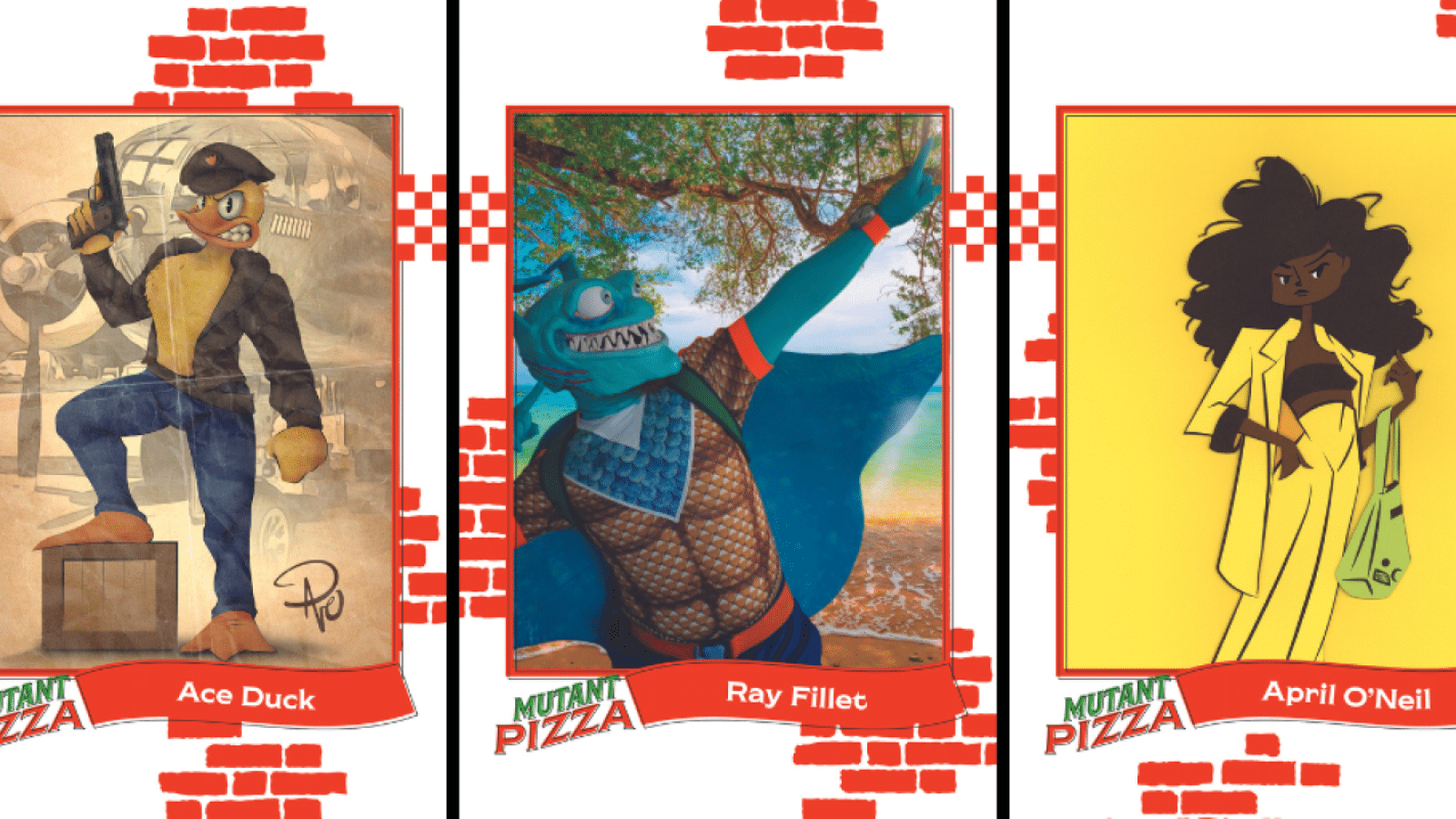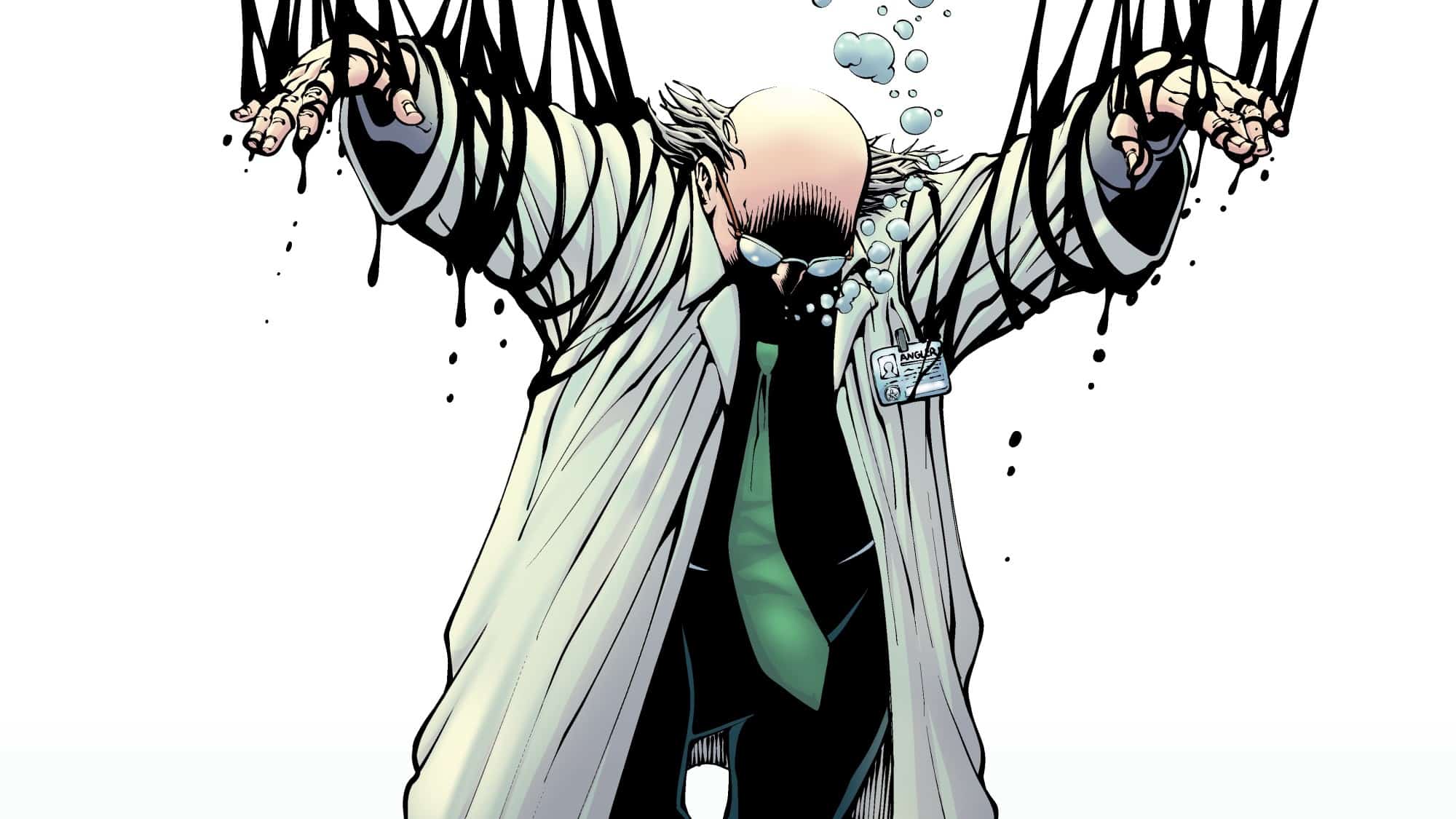MISSED PART I OF OUR INTERVIEW? READ IT HERE!
Black Stars Above is an existential, cosmic and survival horror comic written by Lonnie Nadler, drawn by Jenna Cha, colored by Brad Simpson and lettered by Hassan Otsmane-Elhaou. It follows Eulalie, a Métiswoman living in 1887 Canada, who flees the trap her family has set for her and strikes North toward an unnamed city that might lie outside of our existence or might lie at the heart of the Canadian nation, at the root of Canada’s history. She will face the scarcity and cloying cold characteristic of that place, but also monstrous men, fracturing realities, objects that have touched infinity, and horrors both beyond her bounds of perception and submerged within herself.
The following is an interview with Lonnie Nadler conducted July 7. It has been edited for length and clarity. The conversation comments on the story as a whole, and mentions aspects of the ending, but attempts to avoid spoiling the book.
***
Robert Secundus: Maybe we can move a bit on from Lovecraft now. We’re talking about ink and animals — let’s talk about Margaret Atwood. You mentioned a few times in interviews her book Survival as influencing, or at least sparking, some image in your mind of this woman in the wilderness surviving. So I’m wondering, would you be happy with Black Stars Above being labeled “CanLit?” Is it distinctly Canadian? And if so, how is it Canadian, compared to the American Lovecraftian type of story?
Lonnie Nadler: Yeah, so Margaret Atwood’s book Survival is her exposé on what defines Canadian literature, because for a very long time, and still now I think, people say that Canadian stories don’t have their own identity, whether that’s in film or in literature, or poetry or music. There’s this sense that we just do what America does, and we do it worse. Which, maybe that argument can be made for cinema, but I strongly beg to differ for every other artistic medium.
There is a defining characteristic of Canadian literature, and that’s, at its most basic, survival, whether that means man-against-man or man-against-nature or different variations of man-against-man. That’s a major unifying theme of Canadian literature. And so Black Stars Above very much fits into that canon. And it was very intentional that I tried to fit it within the CanLit genre. Because, you know, it is a survival story. It is a woman against the elements. It is a woman against herself. It is a woman against the people who are oppressing her. It was a woman against her own family. And it also fits into the tradition of like, it’s called “Ontario Gothic,” but it’s basically Canada’s version of Southern Gothic, which Alice Monroe is famous for, and Margaret Atwood herself. While this obviously doesn’t take place fully in Ontario, the tropes of that Gothic fiction are there, too.
RS: What’s interesting to me about centering “survival” in this narrative — or in the really traditional kind of horror fiction that the narration here is really calling back to — is that, at least during the events of the narration, survival isn’t always in question, right? Like, that’s not the central tension. Because you know that the narrator gets to a place where she can write things down. Maybe she’ll die as she’s writing the final words, as in a lot of cheesier Gothic stories. But you know that what you’re currently reading features someone surviving. So how do survival stories work within that frame? Is it that the tension comes down to, you’re worried about what survives or who comes out of the survival experience or what’s left?
LN: I think it’s all of that and a matter of how does one survive in the face of disaster or the face of death?
I mean, by and large, you can go into any story knowing whether or not the protagonist is going to survive. I’d say most of the time they end up surviving, just by the very nature of the way that we tell stories. And so, I think it works the same it what would for anything in a sense, but there’s more, there’s more desperation because the elements are so commanding and so imposing, and have so much hold over us, that I think it creates more attention than it would, for example, like, when we read superhero stories. We know Captain America is going to live every time. And so the threats are lessened by it. But hopefully here, it’s the idea of these threats being more realistic and more awe-inducing, that gives them weight, as opposed to simply the idea of, will she or won’t she survive.
RS: There’s a thread in Atwood about victimhood. And I’m wondering what you think of her model of victimhood, or of Canadian literature and victims. Which, just for a quick summary, since I assume most readers have not read Atwood’s Survival, in the book there are four “positions” of victimhood that she talks about, where in the oppressive system you either (1) deny you’re a victim, (2) blame victimhood on fate, (3) refuse to accept victimhood is inevitable or (4) you become a non-victim, a “creative non-victim,” she says. And she describes the system, both in terms of, like, literature that expresses different ideas about being a victim of nature or history or fate or whatever, and in political terms of real people, eventually either damning themselves to victimhood or rising up against the oppressor. So yeah, what do you think about her whole take on victimhood and Canadian fiction?
[Author’s note: My above summary is pretty poor; it makes it sound like Atwood’s far more victim-blamey than she actually is. When she talks about victims of an oppressor becoming stuck in position 1 or 2, it’s due to an inability to recognize that imperial, colonial and capitalist forces are the real oppressors, and the people who fail to recognize this are themselves white characters who both are themselves oppressed by the state and are participating in systems of oppression. From Survival: “You might wonder, in a snowstorm-kills-man story, whether the snowstorm is an adequate explanation for the misery of the characters, or whether the author has displaced the source of misery in their world & is blaming the snowstorm when they ought to be blaming something else.”]
LN: It’s a tough one for me to address as a straight white guy. Reading Atwood’s explanation of it certainly makes sense to me. And I don’t doubt that she — I mean, she wrote Survival in the ’70s. And so I’m sure even she herself would want to make some revisions to it. But I think a lot of people, either rightly or wrongly, defined themselves by victimhood, and I think that’s something we’re seeing more and more in contemporary culture. I’m personally not a fan of work that’s didactic, and I didn’t want I didn’t want Eulalie to feel like a “victim,” per se, or to address that for a number of reasons — even though she is, but I guess the argument could be made that all protagonists are victims of some sort. But in terms of like victims of a system, that stuff is there. But more so it’s a result of history and historical aspects than it is me desiring to explore the idea of victimhood outright.
RS: It seems at every turn not only in her actions, but just by the fact that the narration is in her own, after the fact, considered, measured voice, that the story is not framed in those terms, to me at least. Because she’s not seeing herself as a victim. She’s portraying herself as an agent.
LN: Yeah, and I think people in 1887, when the book is set, I don’t think someone whose Eulalie’s age would have the means, and the vocabulary, and the knowledge to see herself as a victim. It’s something that we can maybe look at, and see her as a victim, but for herself, it’s like, it’s not even a consideration.
RS: At the beginning and end, I think she is set up to be sacrificed; sacrificed by her parents in marriage, and at the end, sacrificed in a more cosmic version of that. And in both times instantly, the sacrifice is something that she instantly circumvents without consideration. So, yeah, maybe, that notion, or that framing of the “sacrifice” on the altar, different kinds of altars in both cases, is more appropriate to apply to this story than “victimhood?” I don’t know. It seems like you’re taking a different tack at the thing, at oppression, than Atwood.
LN: But yeah, I think it’s this idea that, when anyone tries to force something upon you, there is a primal urge to resist it. Whether or not we have the language to be able to describe why that is, it’s simply the idea that as beings who have agency, when somebody tries to take that away, we have a natural repulsion towards it. Which then answers the moral question that comes with it. It’s something that, you know, if it’s an innate reaction that we have to flee from these situations, then I think the sort of a question of whether or not anyone should have agency over anyone else becomes irrelevant. So I don’t know if that really answers your question, but I think that’s sort of what I was exploring, in the way that it relates to victimhood without directly trying to comment on it.
RS: And by the end, too, she’s not just avoiding victimhood, she’s actively burning things down, quite literally, which seems important. I don’t want to push too much on the details of the final chapters to avoid spoilery talk, but: Another difference from a lot of the traditional horror literature is that there is that glimmer of hope in that it seems like these monstrous oppressive systems can be destroyed, or at least can be harmed in this universe. And so … I don’t know if I can formulate a question other than, uh: Comment on cosmic systems?
[A pause]
LN: Commenting on it is difficult for me because it verges on explaining,
RS: Right, right.
LN: That specifically — the question of the cosmic and our perception of it, and whether or not it’s something that can be battled, or whether we can deliver ourselves from it, is ultimately something I’d like to leave up to the reader.
RS: Maybe this will be a better angle to talk about the ending. One of the final scenes involves something that very much surprised me when I read it; of course I knew the year, I should have realized it might be coming: the train and the rail lines. And so maybe the question I want to ask is:
Whaddaya think about trains? Trains are weird, right?
LN: Yes, yeah! Specifically in Canadian history, because trains allowed for so much growth and expansion, and were even a benefit to indigenous peoples to a certain extent, but it is also responsible for further colonization and industrialization, and the expansion West, which we’re currently living in the result of that. So like, yeah, there are both benefits and drawbacks, but I think in the story’s terms, Eulalie at that point in time sees trains, and specifically that train, as a way forward, quite literally, regardless of how naive her thoughts are toward it.
RS: But it’s still a liminal — I mean, trains are always liminal spaces. But it’s also the place where she’s able to sit and write, it seems, or at least, we get the impression that the narration is coming from that same kind of person who’s sitting in the train at the end. A person who’s in a mechanical thing, that’s also whizzing through the wilderness. She’s somehow still out there in the Green Ribbon, but it’s nothing like it was a few pages ago because you’re in a train.
Winter Camouflage, Arthur Lismer, 1918
LN: Yeah, yes, it’s a, you know, a not-so-veiled metaphor for conquering nature.
I will say they’re also particularly weird in the context of Métis history in particular because the trains — as they were being built toward the later half of the 1800s — before the trains were finished, they were used by the government to transport troops to the Red River to fight off Louis Riel and the Métis people. So it was like the government fully taking advantage of this thing that nobody else had access to as a means of suppressing and depressing people who had very rightfully claimed that land. And, you know, that’s not something I necessarily expected people to get, the irony of a Métis girl getting on a train at the end, but I guess I’ve just explained it, if anyone wants to look into it further.
RS: Eulalie’s from a mixed-race household. So I don’t know how that changes the lens of the story as something talking about these colonial horrors, and this history of oppression and violent oppression. You chose to give us that lens of someone who in her daily life speaks Michif and French and English, who passes as white sometimes in the story, and other times does not. And I’m not gonna ask you to explain why you chose that specific lens. But I do think it is an interesting choice and it changes — it complicates the narrative at almost every step, I think, that she lives in these worlds.
LN: I can speak to that a little bit. In doing research for the book, I interviewed people of Métis descent, and a commonality that they felt both themselves and that is a common thread amongst their ancestors is the idea of, as you said before liminality, and that they, as a mixed-race people who are Indigenous but also have European roots, they exist in a place in between, and so they don’t fit in. They feel they don’t fit in with either the people who are, you know, quote unquote, “fully” Indigenous, and they don’t fit in with people who are quote unquote, “fully” of European descent.
And in the book itself, you know, spaces in between play a large role. And so it all goes toward that.
RS: We’ve mentioned a couple times now the language in the book, and her narration, and one of the things I found most striking was the way that so many of the formal elements call attention to themselves, in a way unusual in comics, whether it’s the cursive script, or the really fascinating strike-throughs indicating changes of thought, or the moments when the comic zooms in on a piece of text and stops being a comic for a little bit and becomes a prose narrative, but still a prose narrative that is an image of a manuscript. So all of these elements add a richness and complexity to the text, but there also feels like a danger there for a horror story. They’re all calling attention to themselves. All these things risk putting distance between the reader and the story; risk, you know, that kind of Brechtian lack of immersion. Which, if that ever happens, you know, the story isn’t scary anymore on a visceral level; but I don’t think Black Stars Above falls into that trap. For me, I think it remains immersive, even while all of these elements are conspiring to make it not immersive. And so I guess my question is: Why risk that? And how did you pull that off?
LN: Thank you. I think some people would disagree with you! Some people have told me that they disagree with you. But that’s fine for me because I wrote the book for myself and for people, like you, I guess, who are OK with those aspects. For me, it wasn’t even a question. While I was writing, I didn’t really ever second guess myself. It was just where the story wanted to go. And as a writer, I’m very much obsessed with form, formalism, the shape that a story takes. I’m more often interested in the form a story takes than the story itself.
And a lot of my favorite kinds of horror stories are told in a similar way. You know, Lovecraft himself was very experimental with form. Weird fiction in general is, and Gothic fiction is, with the devices they use. Frame narratives are inherent to the genre, you know, like the diary of someone; it starts out as conversation between people, and then it’s like, oh, read this diary. And then you as the reader are reading this diary and it cuts back to the, you know, quote unquote, “real” world. The more modern version of that is something like House of Leaves where the whole book is basically a test of the reader’s patience and whether or not they’re able to stay immersed in something that is challenging them and becoming a different book at every single page.
So for me, I was almost — I don’t want to say I was holding back, but it was like a very limited version of what some of those texts are doing. And I think the only reason it might feel more experimental than I perceive it as, is because comics just tend not to do that very much. I’m not the first to do it. I don’t mean it in that sense. Alan Moore puts text in his book constantly. Jonathan Hickman does it all the time. And so, yeah, it just — I don’t want to repeat myself, but yeah, it just comes down to this idea of form, and how form itself can sometimes be scary, when we’re in the perspective of one person, which was Eulalie in this case. I wanted people to experience the story the way she experienced it (aside from that very first scene). And so it just made sense, you know, to go into eight pages of a journal the way that she would be experiencing them. Because I think not doing that would break the immersion. But, you know, the opposite of what I did also runs the risk of breaking immersion.
And on top of that, I love horror, but, I want to push it, I don’t want to do what everyone has done before. I want to try to bring it to new places. And one means of doing that is by experimenting with form. And specifically experimenting with form in a way that hopefully complements the content of the narrative and the content of the characters. So, whether or not it worked, I don’t know, but that’s where it was coming from.
RS: Maybe the most interesting choice to me in the series is just that one panel before the prose journal begins; like you said, other comics experiment with text, but instead of turning the page, and oh, here is now this new thing, here, within the bounds of the comic itself, you have that text presented beforehand, and then you turn the page and you’re in it. It’s such a small thing. But for me as a reader, that made all the difference in going from “OK, the creative team is now giving me this document or datapage to read” to instead “Oh, I’m zooming in with this character’s eyes. And now I’m reading.” Yeah, it’s a small thing, but I thought it was a very important choice.
LN: Thank you. Yeah, it all goes back to the idea of it being you in Eulalie’s perspective. And yeah, it was an effort to show that as opposed to, like you say, just dumping pages on people, because I knew that would be alienating for a lot of readers, so that was a way to sort of show intention, ease them into it. At least I tried to do that.
RS: While we’re talking about lettering, I don’t want to end this interview before at least saying, uh, boy howdy, the lettering, the art, the colors on this series, all are so striking. Each and every piece came together in such an incredible way. It’s not just the lettering of those prose journals, or the individual captions, the cursive narration, that is striking. That sequence in the first issue where she discovers that she’s going to be forced into an arranged marriage — that series of her faces is just one of the most powerful sequences of, like, emotional horror that I’ve seen in a comic in a while. And the art and the colors were just, just astounding. Again, no question. I’m just saying the creative team really was wonderful on this one.
LN: I agree! Yeah, I’m very particular about who I work with. And I need the creative team to be people that I believe can fully realize this vision with me. And I searched for artists for a long time, as did Adrian (Wassel) over at Vault, and lots of names were thrown back and forth. Great artists, just people who weren’t appropriate for what the book was in my head. Because I am a very, you know, I’m a very visual thinker, and I know the tone that I wanted to have in the book; the book had to have this cross-hatching, older style that just not a lot of people in comics do anymore. Especially not a lot of younger people, because it takes too much time. And so, as soon as I saw Jenna’s work, it was kind of like, you know, Jenma’s the one who needs to draw this. And I actually, I found Jenna’s work through the Visible Women hashtag on Twitter. And I sent it to Adrian, after I’d looked through Jenna’s portfolio. And Adrian emailed me back like 30 seconds later. And it was just like, “Dude, wait till you see the email I was typing.” And he sent me an email. And he was recommending Jenna because Jenna had just drawn a short comic for them a couple months prior that he’d sort of forgotten about it until she sent in the pages. So, you know, Jenna was obviously the right person. And then once Jenna was on board, it was kind of like, we both knew what the book needed to be, and bringing on other team members was almost like, oh, who do we want to color this? It was like, oh, Brad, because you know, Brad does amazing work on Bloodbourne. And we wanted this to have a similar feel. So he was our first choice. And he said yes, straight away. And Hassan is — Hassan can do anything. He’s like — I think said this on Twitter — he’s like the Hans Zimmer of lettering, where whatever work needs to be done, he can do it, and he can do it better than anyone.
RS: I know people who will see his name and go, “Oh, that’s on my pull list. Just if he’s lettering it.”
LN: And there’s very few letterers who have that kind of power, who have that kind of that, you know, everyone likes to talk about auteurs, but like, he is an auteur in the sense that he’s malleable, but also someone who understands lettering as a craft that is part and parcel of the storytelling. And as someone who’s obsessed with form, I needed the lettering to be an active part of the story as well. And there’s not many out there who can do that. That’s not a slight on other letterers, it’s just — people see their craft differently, and Hassan just takes it a certain way. It’s not just a job to him. And I appreciate that in the same way coloring is not just a job to Brad. He brings something to all of his work. And Jenna is equally obsessed with process and form. So it’s just this team that I’m very, I feel very fortunate to work with, and I’m just glad that it all worked out. Because as detailed and as dense as my scripts are, they brought something to the book that was unique unto themselves that nobody else could have brought to it.
RS: Well, I think that’s that’s about it as far as questions go, but I have one more, hopefully easy thing to end on, which is like if you were if you were to serve Black Stars Above as, like the first course in a feast, what would be two other stories, movies, paintings, whatever, albums maybe — what would be a couple of other courses that you would serve to complement that? After people put down Black Stars Above, what should they head to next for a complementary experience?
LN: Gosh, that’s hard. I mean, there’s so many things that influenced the book that it’s hard to pick. The first thing that comes to mind is a novel called Ice by Anna Kavan. That’s not very well known, but if anyone reads it, they’ll kind of be like, “Oh, this is where Black Stars Above came from.” Not that it’s like the same story or anything. But the world is being consumed by ice, and it’s very dreamy and atmospheric. It’s a very powerful novel, but unfortunately, Anna Kavan didn’t get to see the success of it.
And just in terms of trying to do similar things, Alan Moore’s Providence. It’s definitely an influence on Black Stars Above, but I think it does different things, and more powerful things with responding to Lovecraft, in that it’s a direct response to Lovecraft and only to Lovecraft. (Well, I guess Chambers, too). I love that book. It doesn’t get enough credit in Alan Moore’s body of work. He said what he was trying to do was what Watchmen did with superheroes, Providence was trying to do for Lovecraft. And I think he very much accomplished that. And anyone who is a fan of Lovecraft, I think should read it, because it’s, it’s densely intelligent and rich. And I might like it more than Watchmen. And I say this, like, as someone whose favorite comic is Watchmen. I don’t know why, but people didn’t seem to latch on to that one like they do some of his other work. Maybe because Neonomicon was so off-putting to people. Those are the two I would say.
I mean, I don’t mean this in the sense that like, I wouldn’t say Black Stars Above is on the same level as those.
RS: Black Stars Above is like a similar taste.
LN: Well, it’s like the pepperoni that’s left in your teeth after you’ve eaten the pizza. Pizza for lunch, and then you go have a five-course meal at a five-star restaurant.
RS: All right, well, hopefully that meal will satiate our readers.
Black Stars Above from Vault Comics is available in trade July 29 at your local comics shop and in bookstores Aug. 11.
Robert Secundus is an amateur-angelologist-for-hire.

